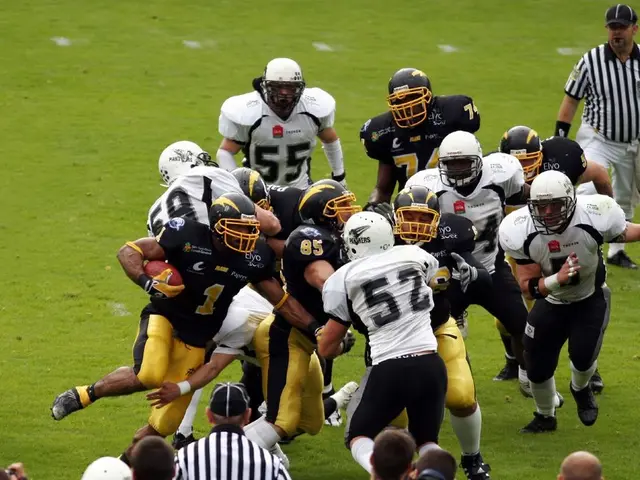Carbohydrate loading: its impact on an athlete's physique and performance
Fueling Your Endurance: Carbohydrate Loading vs. Fat Adaptation
Ever wondered how athletes maintain their energy levels during grueling marathons, triathlons, or cycling races? Two popular strategies come into play: carbohydrate loading and fat adaptation. Each method has its pros and cons, and the choice depends on your goals as an athlete. Let's dive in!
Carbohydrate Loading: Pump Up those Glycogen Reserves!
If you're an endurance athlete aiming for short, high-intensity events, carbohydrate loading could be your go-to strategy. Here's the deal: by upping your carbohydrate intake before a competition, you can maximize your glycogen stores — essential for providing rapid energy. This approach helps delay fatigue and maintain high performance levels [1][5].
However, carbohydrate loading is sensitive to timing and can lead to digestive issues if not managed properly. And let's face it, consuming excessive carbs might result in unnecessary caloric intake [2].
Fat Adaptation: The Marathon Runner's Secret
If your event involves long-duration, low-intensity activities, consider giving fat adaptation a shot. This strategy involves shifting your body to use fat as a primary energy source. By conserving glycogen stores, you might be able to delay fatigue in prolonged events [6]. Plus, adopting this approach could lead to improved metabolic flexibility, handling both fat and carbs effectively.
However, the transition to fat adaptation takes time and might require adjusting your diet and training for weeks or even months [6]. Also, relying on fat for energy might not provide the rapid energy required for high-intensity events, potentially reducing performance in such cases.
The Takeaway: Choose Your Energy Strategy
Ultimately, the choice between carbohydrate loading and fat adaptation depends on your specific needs and goals as an athlete. Carbohydrate loading is ideal for athletes needing rapid energy replenishment, while fat adaptation is more suitable for long-duration, low-intensity activities where conserving glycogen is beneficial.
Pro Tips
- Be mindful of the timing of carbohydrate loading to ensure glycogen stores are maximized without causing digestive issues [1].
- Consider monitoring your microelement levels (especially vitamin B1, potassium, magnesium, and calcium) to minimize the side effects of either strategy [7].
- Stay hydrated and maintain your electrolyte balance, as it plays a crucial role in muscle and nervous system function under high loads [7].
- Don’t forget those 5 essential exercises in your workout routine [8].
References:- [1] Number Analytics: Carb Loading 101 for Endurance Athletes- [2] First Endurance: The Truth About Carbs: Performance Benefits and Long-Term Risk- [5] Everyday Athlete: Intra-Performance Nutrition- [6] General knowledge on fat adaptation strategies for endurance athletes- [7] General knowledge on micronutrients for endurance athletes- [8] Article on essential exercises for your workout routine
- In the realm of health-and-wellness, science shows that athletes using carbohydrate loading as a strategy for endurance events can boost their glycogen reserves, extending their performance and delaying fatigue.
- Engaging in fat adaptation, which adopts the use of fat as a primary energy source, is a popular technique for marathon runners and those participating in long-duration, low-intensity activities, as it might help conserve glycogen stores and improve metabolic flexibility.
- A healthy diet, rich in nutrition and balanced with healthy diets, is crucial for athletes aiming to optimize their energy levels during intense fitness-and-exercise activities, such as sports events.








